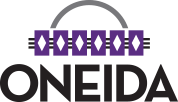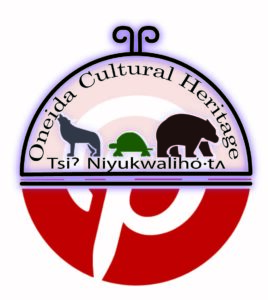The Thanksgiving address, also known as the Kanehelatúksla, and is done before we conduct any of our duties or any business that day. We say this before we start our ceremonies or anything that has to do with our culture or community gatherings. The opening is done at the beginning and then the closing is done at the end of the gathering. It is done to let the Creator and all of creation knows that we are together and that we are still giving thanks to everything. It’s an acknowledgement prayer to everything on Earth and beyond to the Creator’s Land. The prayer starts by giving thanks to the People and then the Earth and everything on Earth. It then gives thanks to the sky world and spirit world. Then to our prophet Handsome Lake, and it ends with thanking the Creator.
Preschool Kanehelatúksla
Ceremonies
Our ceremonies follow the cycle of the seasons. The start of each ceremony is determined by the Faithkeepers in each community. This is determined by a careful observance of agriculture, the moon and the cycle of the seasons. The following is a brief description of the ceremonies held by the Haudenosaunee.
Kanehelatúksla (Thanksgiving Address)
Tshatekˀshélha (Midwinter)
The Midwinter ceremony is celebrated five days after our new year moon (January). This is a time of renewing our responsibilities for the coming year.
The first day, there are three Great Feather Dances that are done. The first one is in honor of all of the title holders: the chiefs, the clanmothers, and the faithkeepers. The second is in honor of, all of the people who hold no title from the youngest newborn to the eldest. The last one is in honor of our Creator.
The second day is “Stirring the Ashes”. The ashes from the wood stoves are used to symbolize our Mother Earth. Wooden paddles are used to turn the ashes over and replenish our Mother Earth so that she can renew herself.
The third day starts out with, the Tobacco Burning Thanksgiving Ceremony. The real tobacco, is collected from all of the people. Through the burning of the tobacco, an acknowledgment, a thanksgiving, and an encouragement are conveyed to all of creation for the renewal and continuation of their responsibilities.
After the tobacco burning, the men’s songs, are sung. This a time when our real names are uplifted (put through to the Creator for recognition). Faithkeepers can also be “put up” during this time, and the Friendship Medicine Society can also be renewed. The Water Drum Dance, is then done and everyone dances. A speaker is chosen to give thanks to all things on earth.
The significance of the drum is that it is round, representing everything in creation and the connection between everything on earth, including the human family. The beating of the drum and the people dancing in a circle, constantly moving in a circle, symbolizes the ongoing cycle of life. Sa∙yes, the wild blackberry is mixed with water and made into a drink which is used as a medicine at this time.
The fourth day is the Peach Stone Game. The Bear Clan, and the Turtle Clan, play against the Wolf Clan. Things that are highly looked upon to bet are wampum, traditional clothing, lacrosse sticks, or turtle rattles. Things not to bet are anything that is solid red in color, which represents anger, anything black, which represents death, or anything is shiny, which represents greed.
After the Peach Stone Game is done, Great Feather Dance, is done as a thanksgiving. Following this dance, the Old Woman’s Dance, and the Bean Dance are performed.
Lastly, the False Face Medicine Society, and the Cornhusk Masks Medicine Society, come in to remind the people of their day of renewing themselves.
The fifth day is set aside as a renewal for these and other medicine societies.
Wáhtaˀ Kayuˀkwaʌtho (Maple Tree Tobacco Burning)
This ceremony is held after the first thunder, which wakes up the trees. When the warm winds once again begin to circulate, a day is set aside to give thanks. The ceremony is usually held at the end of February or first part of March.
A tobacco burning is done to honor the maple tree. Each camp in the community will have their own tobacco burning. A small fire is built near a maple tree. The words in the tobacco burning asks all of creation for a safe time while the people are in the woods working, thus calling on the Creator to assure that no great harm comes to those harvesting the sap. All of creation is acknowledged. Then the people can go out and set up their sugar camps.
Otsyiˀkhé·ta Twanehela·tú (Maple Tree Thanksgiving - Closing)
Once the camps finish harvesting the Maple Sap and everything is cleaned, the Faithkeepers select a time for the people to give thanks for the harvest. The Maple Sap is used as medicine for everyone to drink and give thanks.
Two Great Feather Dances are done as a way to honor the maple tree and for creation’s cooperation during the harvesting of the sap.
Wahsá·sé (Thunder Dance)
This ceremony celebrates the return of Yothihsótha (Our Grandfathers) Latihsakayu∙téhseˀ (the thunderers), who bring the rains to replenish the water. They come from the same direction that the sun sets.
During the time in our Creation Story, when the twins were struggling, the thunderers came to drive many of the animals that the left handed twin had created into the earth. That’s what the lightening is still doing, suppressing these ferocious, powerful animals that are all over the earth.
It’s been told that if the Thunderer were to cease, these animals would emerge and cause a lot of suffering. So, whenever we hear them, we are to make an offering to them of the real tobacco so that they will continue with their responsibilities.
There was also a time long ago that one of the thunder beings married a human being and they had a boy child. Today, this boy is an old man and that’s the reason we refer to the thunderers as our grandfathers. The child is half human and half thunder being. He is related to us and all of the thunderers.
The dance that’s done at this ceremony is called the War Dance. It’s a dance done just by the men.
Shukwahtsíha tʌyethinuhwela·tú· (Sun Dance Thanksgiving)
The Sun Dance Ceremony is a thanksgiving to Shukwahtsíha (he is our Elder Brother), Kwʌtekékha (Daytime), and Wehníétaleˀ (Light Giver). We refer to him as Loskʌlhakehtaˀkó (he is the almighty provider, peace keeper, and protector). This ceremony is held in the spring – usually early May.
Thuwi·sáhs (Moon Dance)
The Moon Dance Ceremony is a thanksgiving honoring Yukhihsótha (our grandmother), Kwaˀahsuteˀkékhaˀ (night time), and Wehní∙taleˀ (light giver). We are reminded of the Moon’s many important responsibilities and ask her to continue to fulfill them.
Atelaˀkhúslaˀ (Community Death Feast)
This ceremony is held to honor our ancestors that have passed on. The Oneida Community members prepare dishes to share. They are encouraged to prepare our traditional foods to include corn mush, venison, squash, wild rice, berries, etc.
A small portion of food from each dish is placed on a plate. A person is appointed to place the plate in an isolated area just before sunrise as an offering to those spirits that have gone on.
This feast takes place twice a year – once in the Spring (after the frost is out of the ground) and then again in the Fall after the Harvest Ceremony.
Twanuhsohaléhteˀ (Medicine Masks Community Cleansing)
This ceremony takes place each spring and fall. The purpose is to cleanse the community of any bad influence. The Medicine Society people go around to each house in the community that requests a cleansing or doctoring of their homes.
Twanʌhʌyʌˀ (Seed Dance)
The Seed Dance Ceremony is an honoring of all plant life. It is done prior to planting in the spring.
The Peach Stone Game is played and seeds are used to bet. The men play against the women. Fifty beans are used as counters. After the game is over, the Great Feather Dance is done to commemorate the purpose of this ceremony. The ways of the woman and the Bean Dance are then done.
Twahyahnekílha (Strawberry Thanksgiving)
This ceremony has to do with giving thanks, honoring and acknowledging the wild strawberry as well as all other berries. Kaˀniyohutésha (the wild strawberry) is the first fruit to ripen.
In our Creation Story, it says that this berry originally came from the Creators world. This day is set aside to make a strawberry to be used as a medicine. Prior to drinking it we are to give thanks to our Creator for all the things he has given to us.
During this ceremony, two Great Feather Dances are done, one before we drink the medicine and one after.
Oyhóhtseh (Green Bean Ceremony)
This ceremony is to honor the beans. As Iroquois people, our ancestors grew dozens of different types of beans. Beans are an important part of our diet. The ceremony is generally held during the first part of August.
Onʌstaseˀ (Green Corn Ceremony)
This ceremony celebrates the fact that the corn has once again provided us with its life sustaining spirit.
Twakhwaló·loks (Harvest Thanksgiving)
The Harvest Thanksgiving ceremony lasts for at least three days assuming that the Peach Stone Game lasts only one day. It is done to give thanks to everything that has provided us with a bountiful harvest and growing season.
The first day there are Three Great Feather Dances. The first one is for all of the title holders, the second is for the people, and the third is for the Creator.
On the second day, the Tobacco Thanksgiving Ceremony is the first thing done. Then the Men’s Song Ceremony is opened. This is when our names are put through. The Friendship Medicine Society Ceremony can be done, and Faithkeepers can be raised up (appointed) at this time, also.
Then the Water Drum Dance is done. A speaker is chosen to give the Thanksgiving during the dance for all of the cycles of life. The wild blackberry is used as a medicine during this dance.
On the third day the Peach Stone Game) is played with the Bear Clan and the Turtle Clan against the Wolf Clan. Things deemed appropriate to bet are wampum, turtle rattles, lacrosse sticks, or traditional clothing.
A runner is chosen from each side of the house to go around early in the morning to collect what the people will be using to bet. The items collected from the Bear and Turtle Clans are matched up with items of equal value that are collected from the Wolf Clan. Whatever side of the house wins, they get back what they bet and what was matched up with it.
Then the Great Feather Dance, the Old Woman’s Dance and the Bean Dance are sung.









